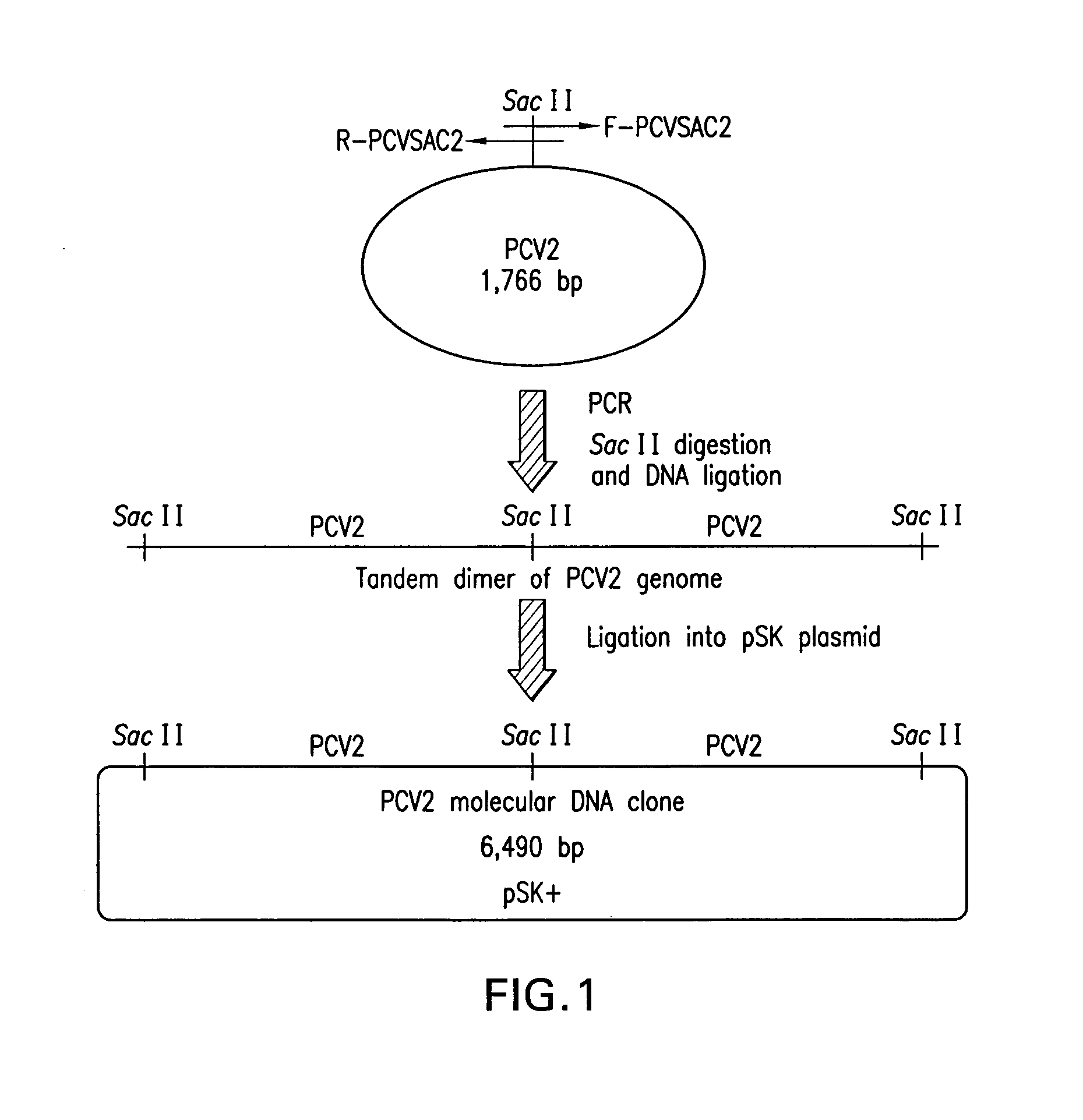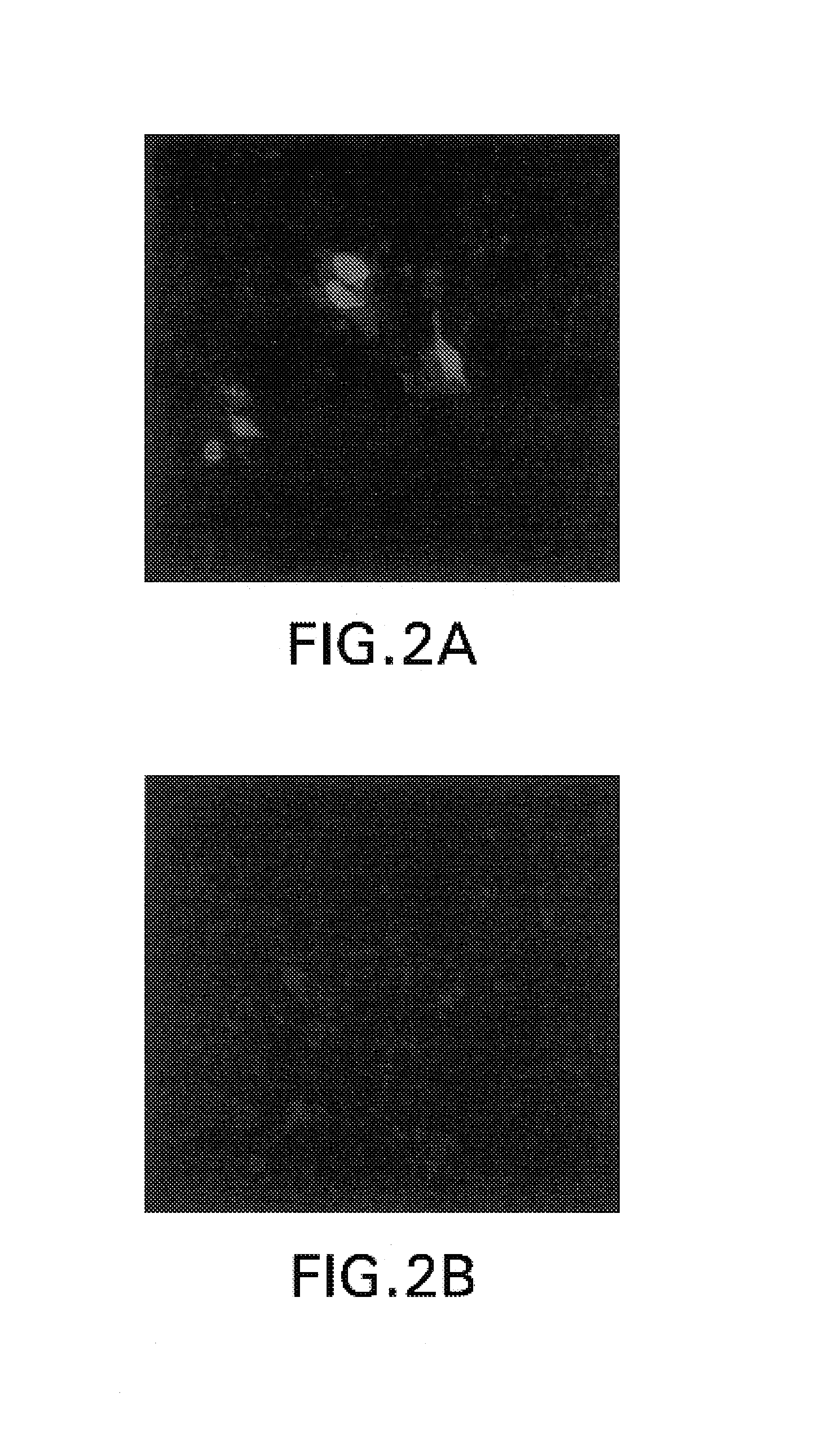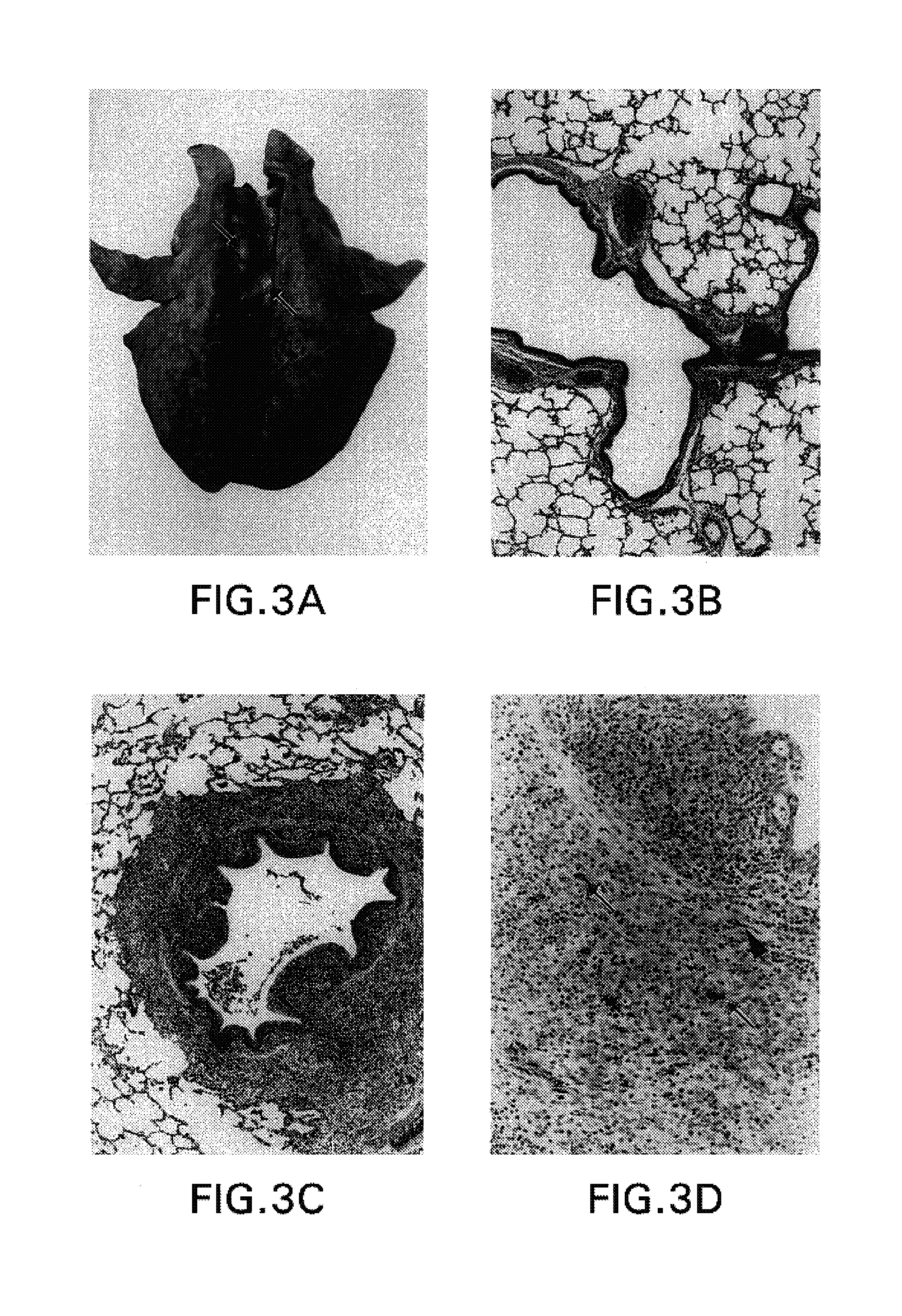Chimeric infectious DNA clones, chimeric porcine circoviruses and uses thereof
a technology of porcine circovirus and dna clone, which is applied in the field of chimeric infectious dna clones and chimeric porcine circoviruses, can solve the problems of pcv2 pathogenesis, impede the understanding of pcv2, and potentially serious economic impact of pcv2 on the swine industry worldwide, and vaccinations against ppv and possibly prrsv have not consistently been shown
- Summary
- Abstract
- Description
- Claims
- Application Information
AI Technical Summary
Benefits of technology
Problems solved by technology
Method used
Image
Examples
example 1
Generation of a PK-15 Cell Line Free of PCV1 Contamination
[0085]The source of the PCV2 isolate was from a spleen tissue sample of a pig with naturally occurring PMWS (PCV2 serial identification number 40895, referred to as “isolate 40895”) (M. Fenaux et al., 2000, supra). Immunohistochemical staining (IHC) with PCV2-specific antibody confirmed the presence of PCV2 antigen in the tissue. The spleen tissues were stored at −80° C. until use.
[0086]The PK-15 cell line purchased from the American Type Culture Collection (ATCC accession number CCL-33) was persistently infected with PCV1 (G. C. Dulac and A. Afshar, 1989, supra). Since only a subpopulation of PK-15 cells was persistently infected (id.), a PK-15 cell line that is free of PCV1 contamination by end-point dilution was generated. Protocol proceeded as follows: PK-15 cells were grown in MEM with Earle's salts and L-glutamine (Life Technologies, Inc., Grand Island, N.Y.) supplemented with 10% fetal bovine serum (FBS) and 1× antibio...
example 2
Construction of the PCV2 Infectious DNA Clone
[0088]To construct a PCV2 molecular DNA clone, a pair of PCR primers was designed according to the published sequence of the PCV2 isolate 40895 (M. Fenaux et al., 2000, supra): forward primer F-PCVSAC2 (5′-GAACCGCGGGCTGGCTGAACTTTTGAAAGT-3′), set forth in SEQ ID NO:5, and reverse primer R-PCVSAC2 (5′-GCACCGCGGAAATTTCTGACAAACGTTACA-3′), set forth in SEQ ID NO:6. This pair of primers amplifies the complete genome of PCV2 with an overlapping region containing the unique SacII restriction enzyme site (FIG. 1). DNA was extracted using the QIAamp DNA Minikit (Qiagen, Inc., Valencia, Calif.) from a spleen tissue sample of a pig with naturally occurring PMWS (isolate 40895) (M. Fenaux et al., 2000, supra). The extracted DNA was amplified by PCR with AmpliTaq Gold polymerase (Perkin-Elmer, Norwalk, Conn.). The PCR reaction consisted of an initial enzyme activation step at 95° C. for 9 min, followed by 35 cycles of denaturation at 94° C. for 1 min, ...
example 3
In Vitro Transfection with the PCV2 Molecular DNA Clone and Generation of a Biologically Pure and Homogenous PCV2 Infectious Virus Stock
[0091]To test the infectivity of the molecular DNA clone in vitro, PK-15 cells free of PCV1 contamination were grown in 8-well LabTek chamber slides. When the PK-15 cells reached about 85% confluency, cells were transfected with the molecular DNA clone using Lipofectamine Plus Reagents according to the protocol supplied by the manufacturer (Life Technologies, Inc). Mock-transfected cells with empty pSK vector were included as controls. Three days after transfection, the cells were fixed with a solution containing 80% acetone and 20% methanol at 40° C. for 20 min., and an immunofluorescence assay using a PCV2-specific rabbit polyclonal antisera was performed to determine the in vitro infectivity of the molecular DNA clone (see below).
[0092]To generate a biologically pure and homogeneous PCV2 infectious virus stock for the animal inoculation experimen...
PUM
| Property | Measurement | Unit |
|---|---|---|
| Angle | aaaaa | aaaaa |
| Angle | aaaaa | aaaaa |
| Angle | aaaaa | aaaaa |
Abstract
Description
Claims
Application Information
 Login to View More
Login to View More - R&D
- Intellectual Property
- Life Sciences
- Materials
- Tech Scout
- Unparalleled Data Quality
- Higher Quality Content
- 60% Fewer Hallucinations
Browse by: Latest US Patents, China's latest patents, Technical Efficacy Thesaurus, Application Domain, Technology Topic, Popular Technical Reports.
© 2025 PatSnap. All rights reserved.Legal|Privacy policy|Modern Slavery Act Transparency Statement|Sitemap|About US| Contact US: help@patsnap.com



